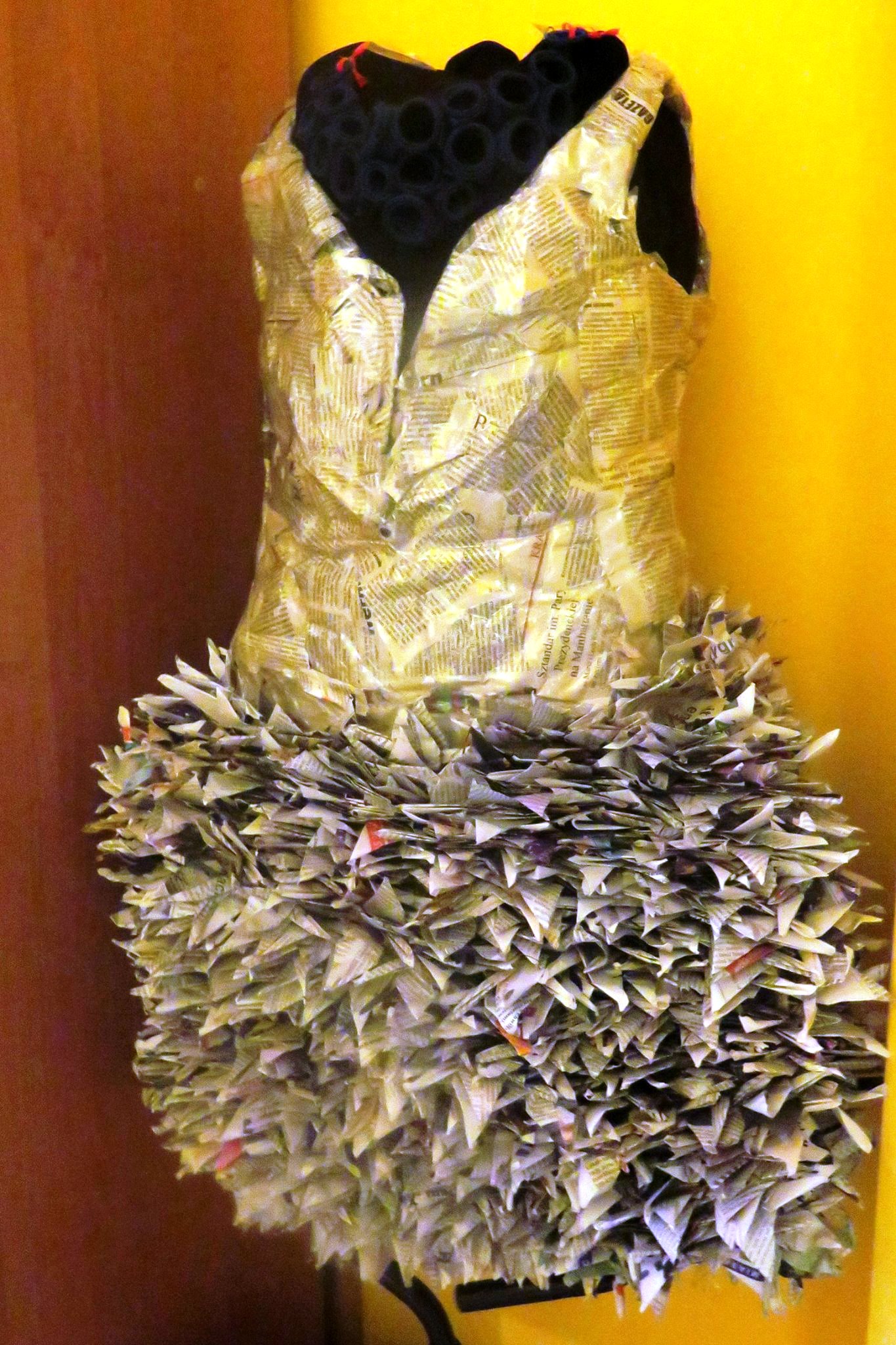
Sukienka powstała w odpowiedzi na pomysł stworzenia kolekcji ubrań tzw. mody ekologicznej. Z założenia miała być wykonana przedmiotów, którym można nadać drugie życie. Ja postawiłam na mój ulubiony materiał czyli papier, a dokładnie stare zużyte czarno-białe gazety. Na stworzenie całej kreacji potrzebowałam tydzień czasu. Był to bardzo pracowity okres ze względu na ilość elementów (kilkaset) potrzebnych na stworzenie spódnicy. W pierwszym etapie prac musiałam przygotować sobie kwadraty, a następnie każdy z nich starannie składałam aż do momentu powstania żurawia origami - symbolu szczęścia. To od niego wszystko się zaczęło, to on był inspiracją. Najpiękniejszy moment to ten w którym założyłam na siebie gotową już sukienkę i mogłam zobaczyć w oczach innych ludzi podziw, zachwyt i zdziwienie. W efekcie ta mieszanka uczuć wywoływała uśmiech na ich twarzach, a właśnie o to chodzi. Żurawie origami w takiej dawce przyniosły innym trochę szczęścia i tym samym również mnie. Marta Maszkowska IIa
The dress was created in response to the idea of creating a collection of so-called organic fashion clothes. It was supposed to be made of objects that could be given a second life. I chose my favorite material, that is paper, old black and white newspapers, to be exact. To make the whole dress I needed a week. It was a very busy period due to the number of elements (several hundred) needed to create the skirt. In the first stage of the work I had to prepare paper squares and then fold each of them carefully until an origami crane - a symbol of happiness – was created. Everything started with the crane, in was an inspiration. The most beautiful moment was the one when I put on my newly-made dress and in the eyes of other people I could see admiration, delight and surprise. As a result, this mixture of feelings triggered a smile on their faces, and this is exactly what is important. Origami cranes in such a number have brought some happiness to others and in this way to me as well. Marta Maszkowska IIa
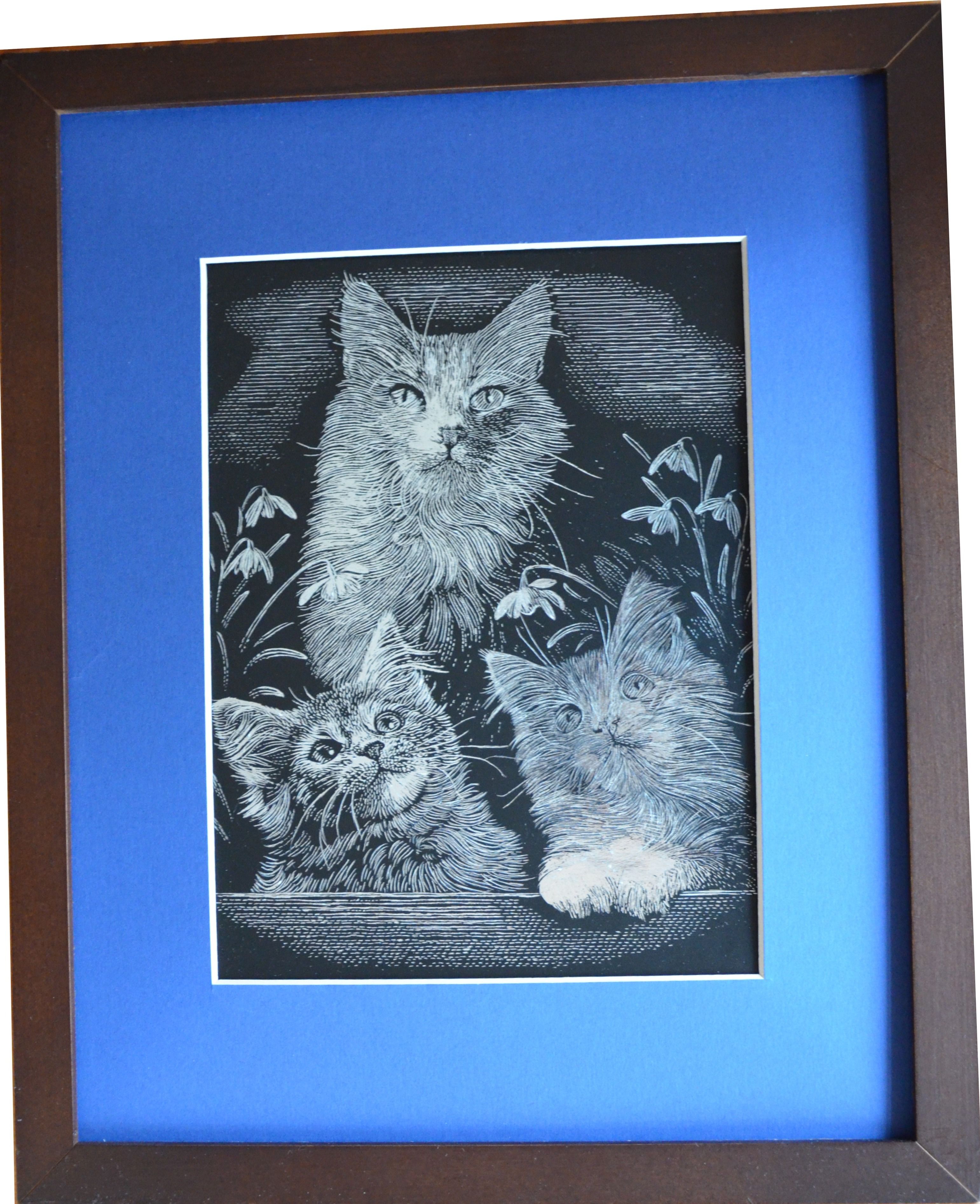
„Koty” powstały na zajęciach z wolontariatu w WTZ były robione technika wydrapywania, na kartce pokrytej srebrną folią i specjalną czarną farbą kreskami wydrapywało się wzór, nauczyłam się ich robić dzięki pani Ani, która pokazała mi na czym to polega. Agata Mizgalska IIC
‘The Cats’ were created during workshops for volunteers working with mentally disabled people. They were made with scratching technique. On a sheet of paper covered with silver foil and special black paint you produce the pattern with short scratches. I learned this technique from the instructor during the workshops, who showed me how to do it. Agata Mizgalska IIC
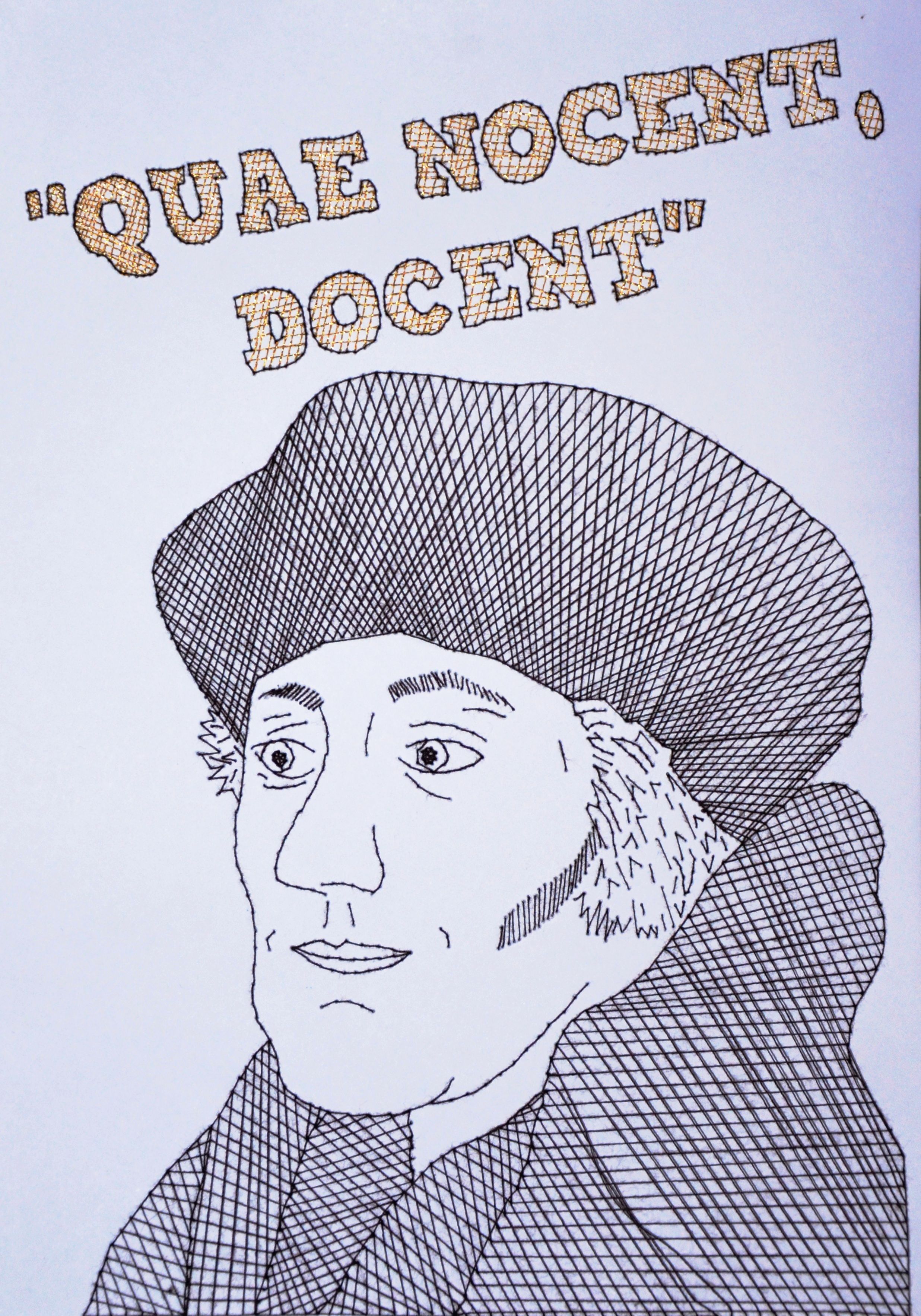
Erazm z Rotterdamu został wykonany techniką haftu matematycznego - to moja ulubiona forma robótek ręcznych. Powstawał około tygodnia, a pomysł na wyhaftowanie tej właśnie postaci przyszedł mi od razu do głowy po usłyszeniu tematu: "Ulubione dzieło moich rąk". W połączeniu z nazwą projektu Erasmus+ było dla mnie oczywiste, że to właśnie Erazm będzie tematem mojej pracy. Chciałam też oddać jakąś głębszą myśl, która doprowadzi odbiorców do chwili zadumy, więc słowa tego myśliciela "Quae nocent, docent" (Co szkodzi, uczy) wydały mi się idealnym dopełnieniem tego projektu. Karolina Trzyna IID
The portrait of Erasmus of Rotterdam has been made with a mathematical embroidery technique - this is my favourite form of handwork. It took me about a week to make it, and the idea of embroidering a portrait of this person came to my mind immediately when I heard the topic: "The favourite work of my creation". Combined with the fact that we are doing our project within the programme Erasmus +, it was obvious to me that Erasmus would be the subject of my work. I also wanted to present a deeper thought that would lead the people looking at it to a moment of reflection, so the words of this thinker, "Quae nocent, docent" (What hurts, teaches) seemed to me a perfect addition to the portrait. Karolina Trzyna IID
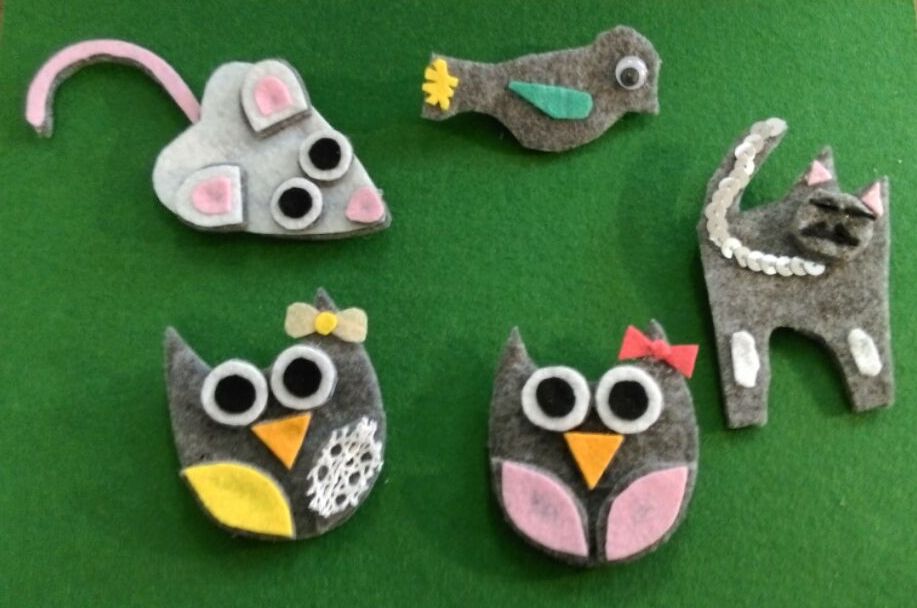
Maskotki z filcu były klejone na gorąco, robiliśmy je na warsztatach terapii zajęciowej. Klaudia Grabalska IIC
The felt mascots were glued hot, we made them at the occupational therapy workshops, together with mentally disabled people. Klaudia Grabalska IIC
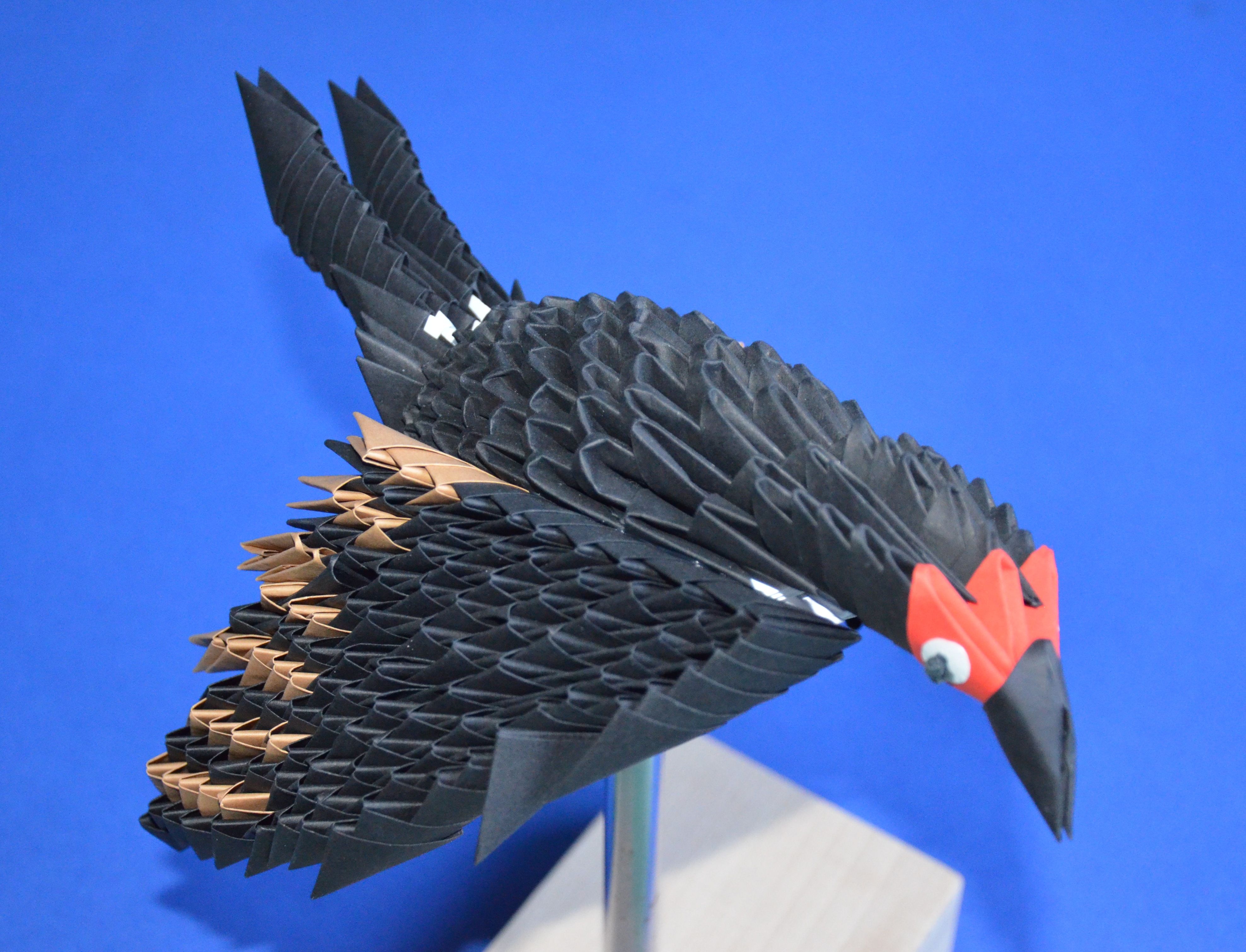
Ptak został zrobiony techniką origami. To moja ulubiona technika. Paulina Draniak IIA
The bird was made in origami technique. This is my favourite technique. Paulina Draniak IIA